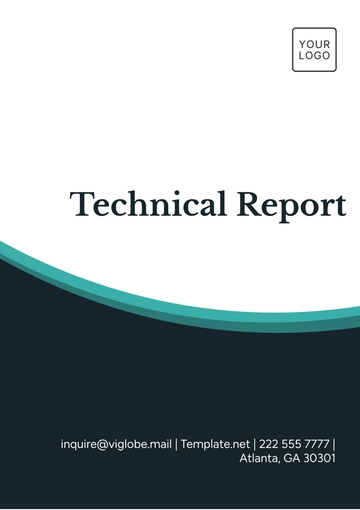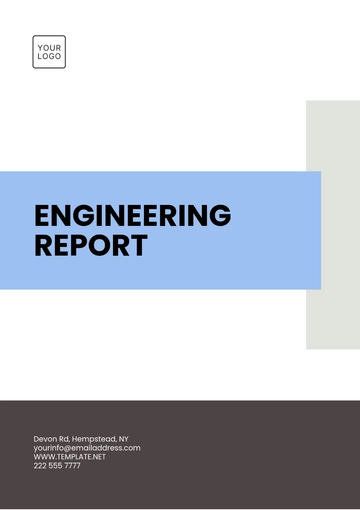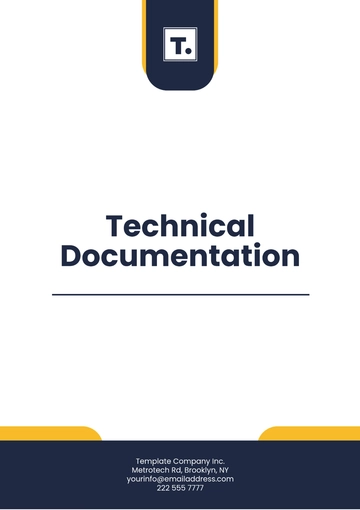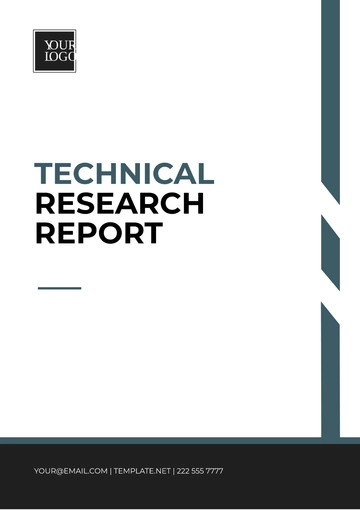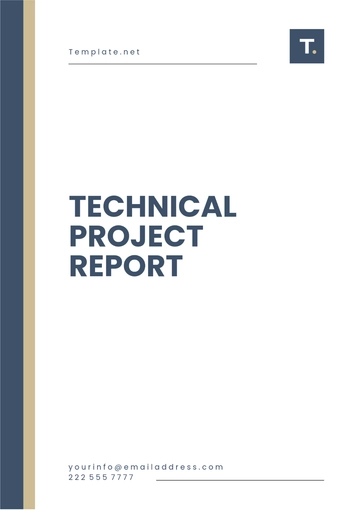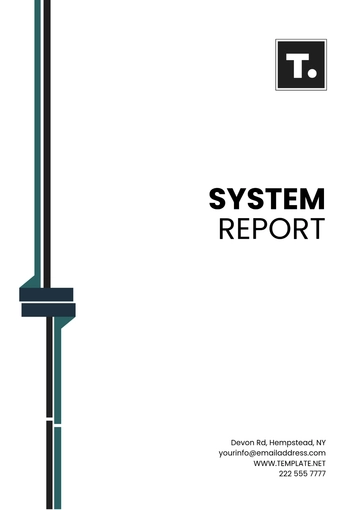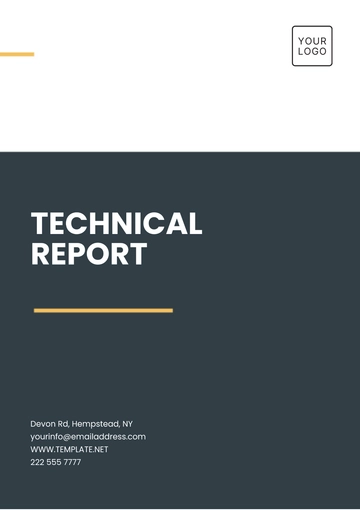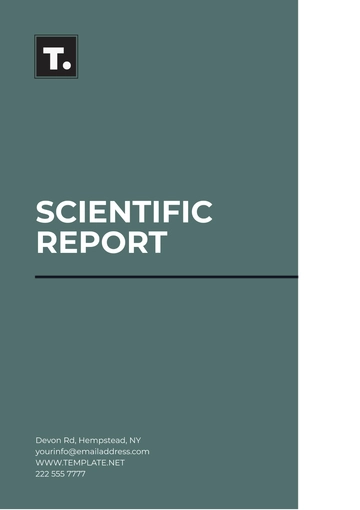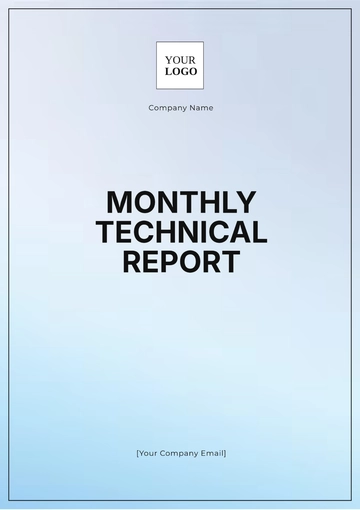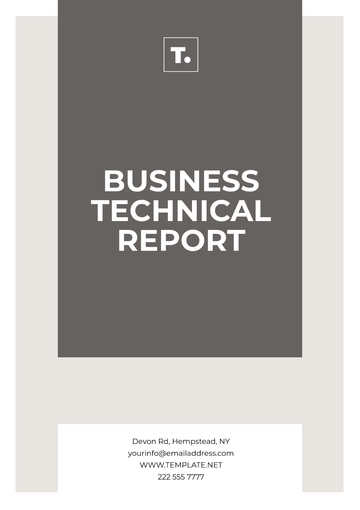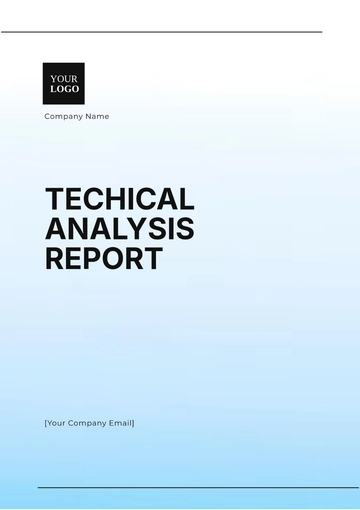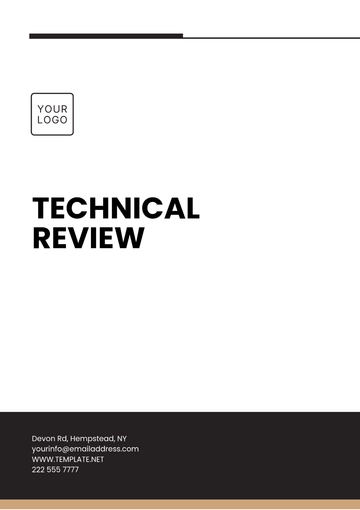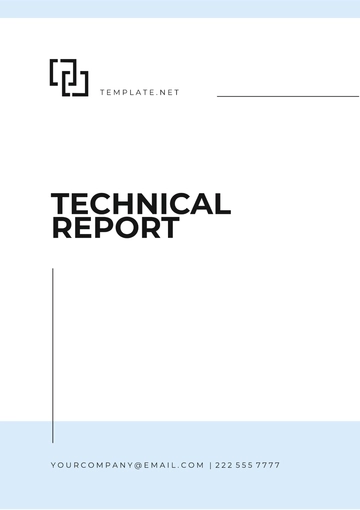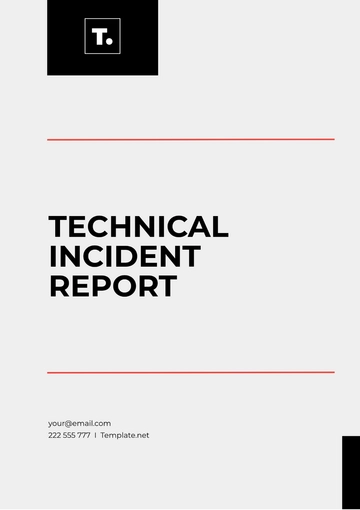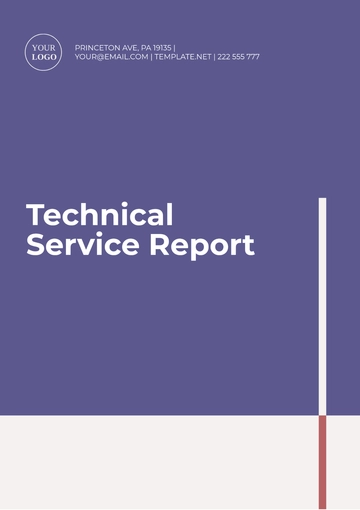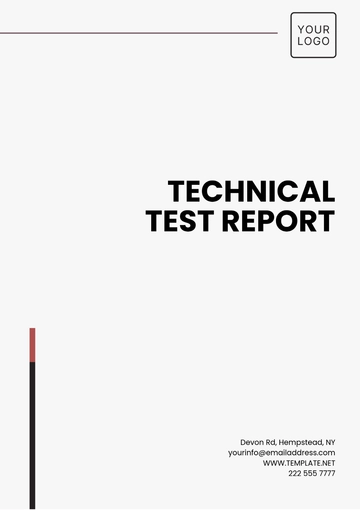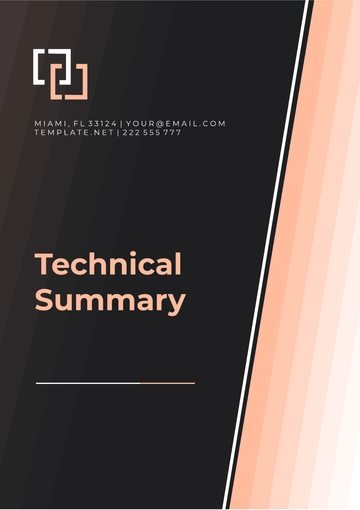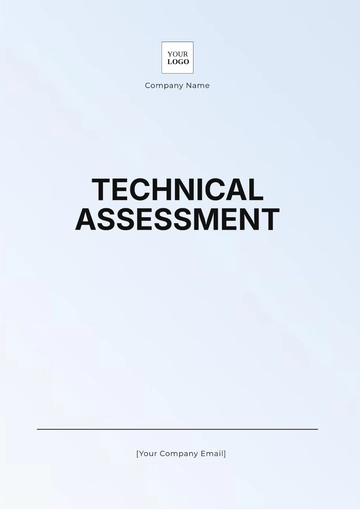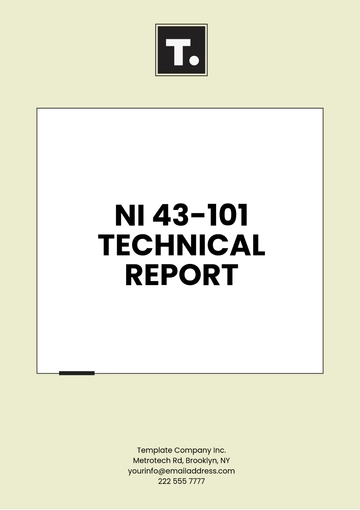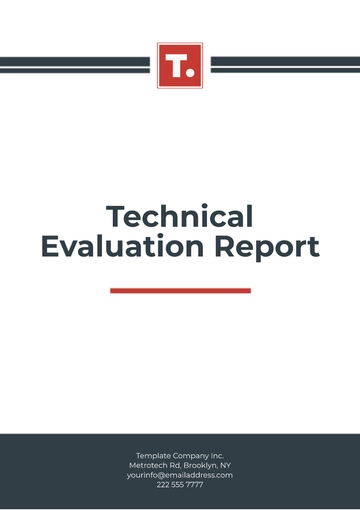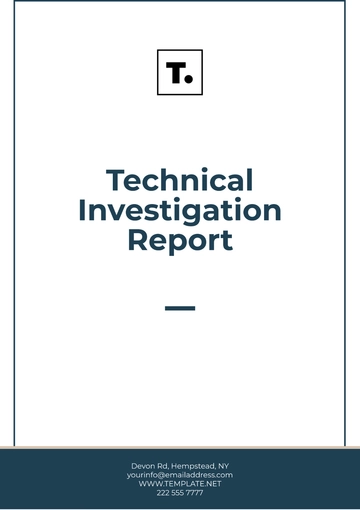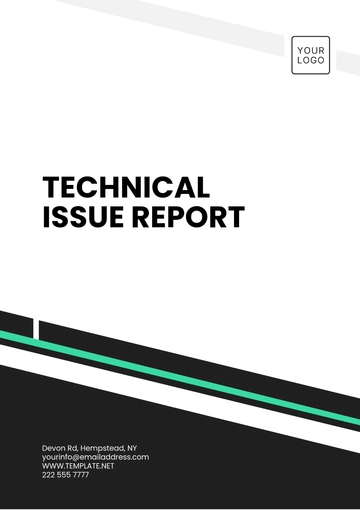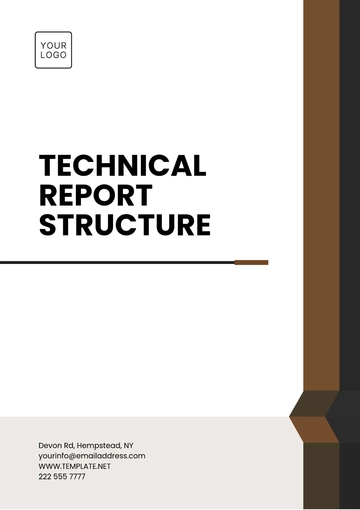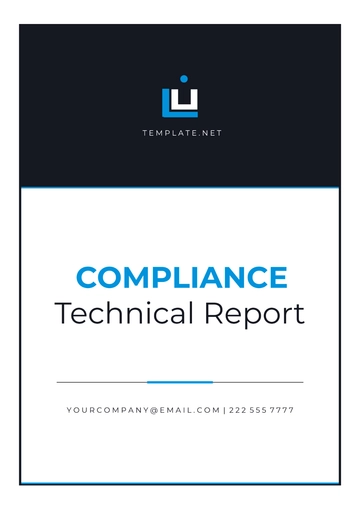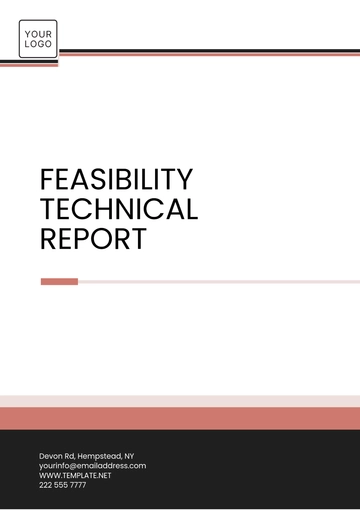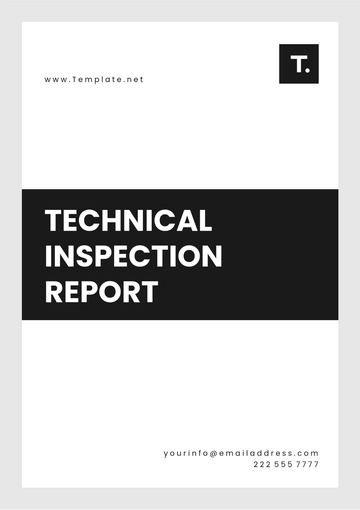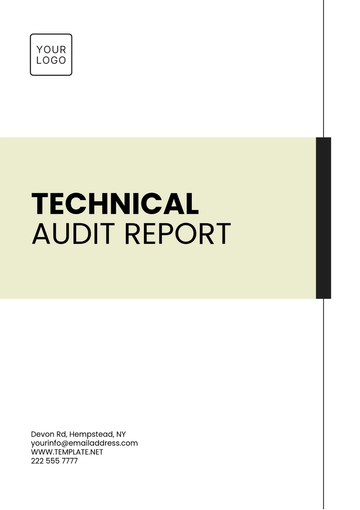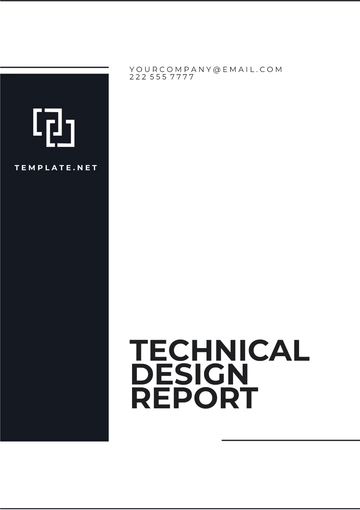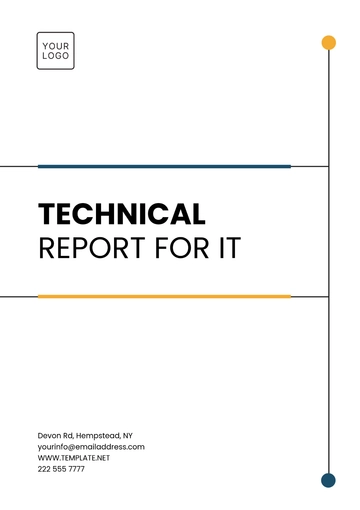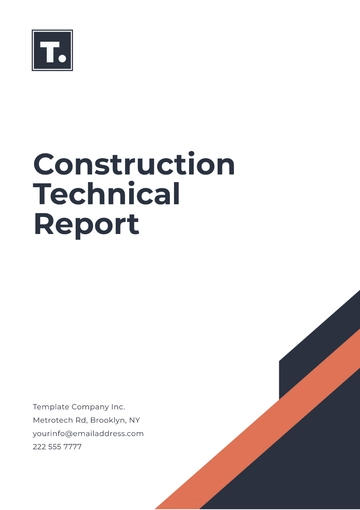Free Report Technical Specification
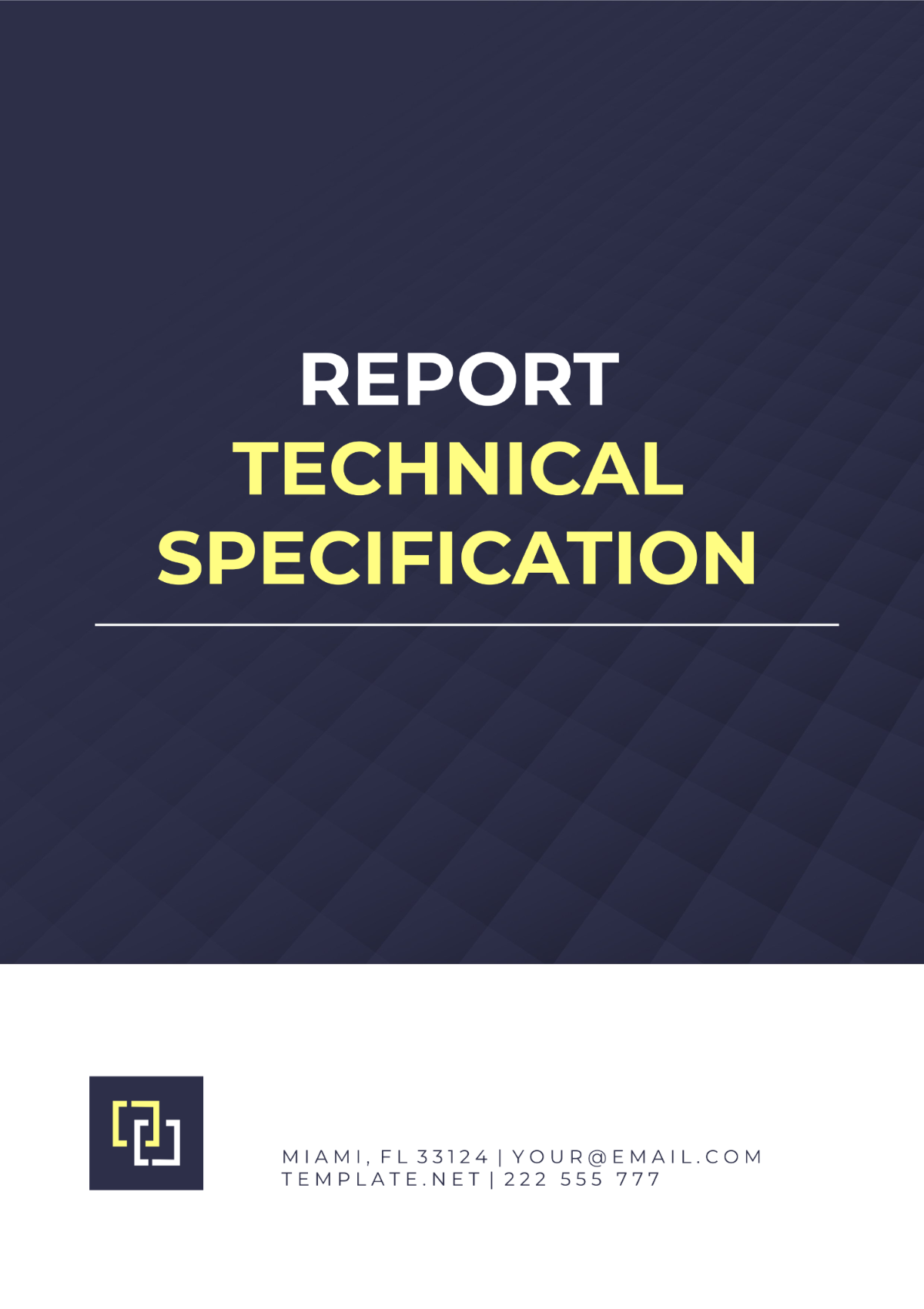
1. Introduction
This document outlines the technical specifications for the "Quantum Health Monitoring System" (QHMS), which aims to deliver a revolutionary AI-driven platform to monitor and predict patient health metrics using real-time data from IoT-enabled devices. The system is designed to enhance healthcare delivery by providing predictive analytics, early warning systems, and personalized care plans based on AI algorithms. This document details the system architecture, hardware, software, performance, security, and operational requirements.
Date of Preparation: March 12, 2061
Project Manager: [YOUR NAME]
Version: 2.1
2. Scope
The purpose of this document is to define the technical specifications for the development and deployment of the QHMS. This report provides guidance on system design, integration, operational standards, and compliance, serving as a reference for stakeholders including developers, testers, and management teams. The system will be deployed across hospitals, clinics, and personal health devices with the goal of monitoring 100 million patients globally by 2065.
3. System Overview
The Quantum Health Monitoring System (QHMS) integrates quantum computing with AI algorithms and IoT devices to track real-time health metrics such as heart rate, blood sugar levels, and respiratory function. The platform is cloud-based and supports data collection, real-time analytics, and alerts for medical emergencies.
Key Features:
Predictive analytics for early diagnosis of chronic conditions
Real-time monitoring of 50+ health indicators
Scalable architecture capable of managing 100 million active users
Fully encrypted communications for patient data security
Compatibility with smartwatches, smartphones, and hospital-grade medical equipment
AI-driven alerts sent directly to healthcare providers
4. Hardware Requirements
4.1. Server Requirements
The QHMS platform will operate on high-performance quantum cloud servers designed to process large-scale health data in real-time.
Component | Specification |
|---|---|
Processor | Quantum Processor, 128 qubits |
RAM | 1 TB DDR10 |
Storage | 10 PB (Petabytes) SSD |
Network Interface | 100 Gbps Fiber Optic |
Redundancy | Full redundancy with quantum failover |
4.2. Client-Side Requirements
Patients and healthcare professionals accessing the system will require devices that meet the following specifications:
Component | Specification |
|---|---|
Processor | Hexa-core, 4.5 GHz |
RAM | 32 GB DDR6 |
Storage | 100 GB SSD |
Network Interface | 1 Gbps Fiber Optic or 5G |
Display | 4K UHD Display |
5. Software Requirements
5.1. Server-Side Software
The platform’s server environment will run on advanced quantum and classical computing systems, utilizing a combination of AI algorithms for predictive healthcare.
Software | Version |
|---|---|
Operating System | Quantum Linux OS 15.0 |
Database | QuantumSQL 10 |
Web Server | Apache 5.0 Quantum Edition |
Programming Language | Python 8.0, Java 18.0, Quantum C++ |
AI Libraries | TensorFlow 9.0, PyTorch 8.1 |
Quantum Computing SDK | IBM Qiskit 10.0 |
5.2. Client-Side Software
Healthcare professionals and patients will need the following client-side software to interact with the system:
Software | Version |
|---|---|
Operating System | Windows 15, macOS 17, Linux 12 |
Browser | Chrome 150+, Firefox 120+, Safari 20+ |
API Support | REST, GraphQL, gRPC |
Mobile App Support | iOS 20, Android 14 |
6. Performance Requirements
The QHMS platform must adhere to the following performance metrics to ensure scalability and reliability:
Metric | Requirement |
|---|---|
Uptime | 99.999% availability |
Response Time | < 200ms for 99% of requests |
Concurrent User Support | 100 million concurrent users |
Peak Data Throughput | 10 PB/day |
AI Predictive Latency | < 1 second per prediction |
The system's performance will be monitored using advanced tools such as Quantum Insights 4.0, and automatic alerts will be triggered for any deviation from the performance baseline.
7. Security Requirements
Ensuring the security of patient data is a top priority. The QHMS system will be fully compliant with global security standards, including HIPAA, GDPR, and local regulations.
Security Standard | Compliance |
|---|---|
Data Encryption | AES-512 and Quantum Key Distribution |
Authentication | Multi-factor Authentication (MFA) |
Access Control | Role-Based Access Control (RBAC) |
Data Privacy Regulations | HIPAA, GDPR, CCPA |
Auditing & Logging | 100% real-time monitoring with 10-year retention |
Regular penetration testing and quantum-safe cryptography will be used to protect the system from emerging cyber threats. A dedicated incident response team will manage and mitigate risks.
8. Data Management
8.1. Database Architecture
QHMS will leverage a quantum-enhanced relational database system that allows for real-time data processing and predictive analytics. The database will have active-passive replication with disaster recovery capabilities.
Component | Specification |
|---|---|
Database Engine | QuantumSQL 10.0 |
Data Replication | Active-Passive, near-instant replication |
Backup Schedule | Continuous backup with real-time data integrity checks |
8.2. Data Retention Policy
The system will follow stringent data retention policies in compliance with local and international healthcare regulations.
Data Type | Retention Period |
|---|---|
Patient Health Data | 25 years |
Transaction Logs | 10 years |
Access Logs | 2 years |
User Activity Logs | 5 years |
Data older than the retention period will be securely archived or destroyed.
9. Testing and Validation
9.1. Testing Strategy
The system will undergo the following testing phases to ensure optimal performance and security:
Test Type | Description |
|---|---|
Unit Testing | Verifying functionality of individual components |
Integration Testing | Ensuring seamless communication across subsystems |
Load Testing | Testing system performance under high user loads |
Security Testing | Assessing system security against external threats, including quantum hacking attempts |
9.2. Validation
After testing, validation will include regulatory compliance checks and user acceptance testing (UAT) with a panel of healthcare professionals and patients.
10. Deployment Plan
The deployment of QHMS will be carried out in phases to mitigate risks and ensure seamless integration.
10.1. Pre-Deployment
Quantum cloud infrastructure setup on IBM Quantum Cloud
Final round of stress testing in a simulated production environment
Backup and disaster recovery setup
10.2. Deployment
Phased rollout beginning with the core health monitoring system
Deployment to hospitals and clinics across North America, followed by Europe and Asia
Continuous monitoring to ensure stability and performance
10.3. Post-Deployment
Monitoring and tuning of the system in production
Onboarding and training for healthcare professionals
Monthly maintenance and security patch updates
11. Conclusion
The Quantum Health Monitoring System (QHMS) offers an advanced solution to revolutionize patient care through real-time health monitoring, AI-driven diagnostics, and a quantum-powered infrastructure. Adhering to the technical specifications outlined in this document will ensure the system operates at peak efficiency, maintaining high security, scalability, and reliability standards.
Signatories:

Project Manager: [YOUR NAME]
Date: April 1, 2061

Lead Developer: James Liu
Date: April 1, 2061
- 100% Customizable, free editor
- Access 1 Million+ Templates, photo’s & graphics
- Download or share as a template
- Click and replace photos, graphics, text, backgrounds
- Resize, crop, AI write & more
- Access advanced editor
The Report Technical Specification Template offered by Template.net is the perfect solution for professionals needing to create detailed, structured reports on technical projects. Editable in our Ai Editor Tool and fully customizable, this template helps ensure that every aspect of a technical report are clearly documented. Make it yours now!
You may also like
- Sales Report
- Daily Report
- Project Report
- Business Report
- Weekly Report
- Incident Report
- Annual Report
- Report Layout
- Report Design
- Progress Report
- Marketing Report
- Company Report
- Monthly Report
- Audit Report
- Status Report
- School Report
- Reports Hr
- Management Report
- Project Status Report
- Handover Report
- Health And Safety Report
- Restaurant Report
- Construction Report
- Research Report
- Evaluation Report
- Investigation Report
- Employee Report
- Advertising Report
- Weekly Status Report
- Project Management Report
- Finance Report
- Service Report
- Technical Report
- Meeting Report
- Quarterly Report
- Inspection Report
- Medical Report
- Test Report
- Summary Report
- Inventory Report
- Valuation Report
- Operations Report
- Payroll Report
- Training Report
- Job Report
- Case Report
- Performance Report
- Board Report
- Internal Audit Report
- Student Report
- Monthly Management Report
- Small Business Report
- Accident Report
- Call Center Report
- Activity Report
- IT and Software Report
- Internship Report
- Visit Report
- Product Report
- Book Report
- Property Report
- Recruitment Report
- University Report
- Event Report
- SEO Report
- Conference Report
- Narrative Report
- Nursing Home Report
- Preschool Report
- Call Report
- Customer Report
- Employee Incident Report
- Accomplishment Report
- Social Media Report
- Work From Home Report
- Security Report
- Damage Report
- Quality Report
- Internal Report
- Nurse Report
- Real Estate Report
- Hotel Report
- Equipment Report
- Credit Report
- Field Report
- Non Profit Report
- Maintenance Report
- News Report
- Survey Report
- Executive Report
- Law Firm Report
- Advertising Agency Report
- Interior Design Report
- Travel Agency Report
- Stock Report
- Salon Report
- Bug Report
- Workplace Report
- Action Report
- Investor Report
- Cleaning Services Report
- Consulting Report
- Freelancer Report
- Site Visit Report
- Trip Report
- Classroom Observation Report
- Vehicle Report
- Final Report
- Software Report
